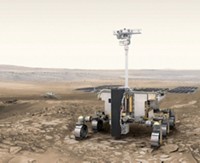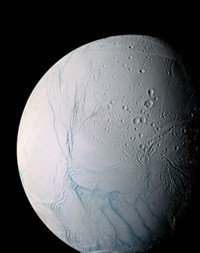Advertisement
Grab your lab coat. Let's get started
Welcome!
Welcome!
Create an account below to get 6 C&EN articles per month, receive newsletters and more - all free.
It seems this is your first time logging in online. Please enter the following information to continue.
As an ACS member you automatically get access to this site. All we need is few more details to create your reading experience.
Not you? Sign in with a different account.
Not you? Sign in with a different account.
ERROR 1
ERROR 1
ERROR 2
ERROR 2
ERROR 2
ERROR 2
ERROR 2
Password and Confirm password must match.
If you have an ACS member number, please enter it here so we can link this account to your membership. (optional)
ERROR 2
ACS values your privacy. By submitting your information, you are gaining access to C&EN and subscribing to our weekly newsletter. We use the information you provide to make your reading experience better, and we will never sell your data to third party members.
Physical Chemistry
Mariner infrared spectrometer designated a chemical landmark
Instrument provided new data on the chemistry of Mars and pioneered spectroscopic studies of the solar system
by Linda Wang
June 26, 2017
| A version of this story appeared in
Volume 95, Issue 26

Groundbreaking research conducted in the 1960s that led to the development of an infrared spectrometer that flew aboard the Mariner 6 and 7 spacecraft was designated a National Historic Chemical Landmark during a ceremony on May 15 at the University of California, Berkeley.
The celebration honored the pioneering work of George Pimentel and his graduate student Kenneth Herr of the University of California, Berkeley, who designed and built the spectrometers for the 1969 space missions to Mars.
“At the time, spacecraft were a rarity, and much of our limited knowledge about Mars was based on observations from Earth-based telescopes,” said Peter Dorhout, ACS president-elect, during the dedication ceremony. “But NASA was determined to reach the planet, and after six unsuccessful attempts, they ultimately succeeded in 1965. Known as Mariner 4, that unoccupied craft flew within 9,817 km of the planet’s surface.

“Mariner 6 and 7 were designed to follow up on that accomplishment,” Dorhout continued. “These two missions were intended to gather information about the martian surface and atmosphere, and to demonstrate and develop technologies required for future missions. And that’s where Pimentel and Herr come in.”
The idea for the infrared spectrometer began with a conversation between Pimentel and his longtime friend and mentor Urner Liddel, who was a planetary science expert. Liddel had been impressed with a rapid-scan IR spectrometer in Pimentel’s lab, and he challenged Pimentel to develop an instrument that could take an infrared spectrum of the atmosphere of Mars. An IR spectrometer measures the absorption of infrared radiation by a sample, and the resulting IR spectrum is characteristic of the chemicals present in the sample.
“The revolutionary spectrometer had to be rugged enough to withstand the rigors of rocket launch and space travel, yet sensitive enough to examine the chemistry of Mars,” Dorhout said.

To reduce the instrument’s weight to satisfy NASA’s 11.4 kg limit, Pimentel proposed using an interference filter, rather than a prism or grating, as its dispersive element to generate the IR spectrum. He and Herr won a grant from NASA in 1964 to develop a prototype, and in 1966 it was accepted for the Mars Mariner missions.
George’s widow, Jeanne Pimentel, recalled some of the resistance that her husband and Herr initially encountered from NASA and its contractor, the Jet Propulsion Laboratory (JPL). “George and Ken were determined to push the state of the art of instrument design to get the best possible scientific research,” she said in a 2000 article in the Chemical Intelligence. “NASA and JPL wanted a safer, less ambitious approach.”
Nevertheless, the spectrometer flew aboard both the Mariner 6 and Mariner 7 spacecraft in 1969. The data the instruments sent back showed that the atmosphere on Mars is made up almost entirely of carbon dioxide, with trace amounts of water vapor. Solid carbon dioxide and water ice were detected at the south polar cap, while vibrational signatures of iron oxyhydrates showed that liquid water once existed on Mars. After the missions, Pimentel continued to design equipment for follow-up experiments back on Earth.
“To George, chemistry education was hugely important, so he often used the IR spectrometer and its results to make his talks and writings more exciting to students,” Jeanne Pimentel tells C&EN. “So it’s particularly appropriate that the landmark plaque and accompanying IR spectrometer display are in Pimentel Hall.”
ACS has so far designated more than 80 landmarks, and the program is celebrating its 25th anniversary this year (C&EN, Nov. 21, 2016, page 39). The recognition program celebrates seminal achievements in the history of the chemical sciences and provides a record of their contributions to chemistry and society in the U.S.
To read more about the chemical landmarks program, including previously designated landmarks, visit www.acs.org/landmarks.





Join the conversation
Contact the reporter
Submit a Letter to the Editor for publication
Engage with us on Twitter